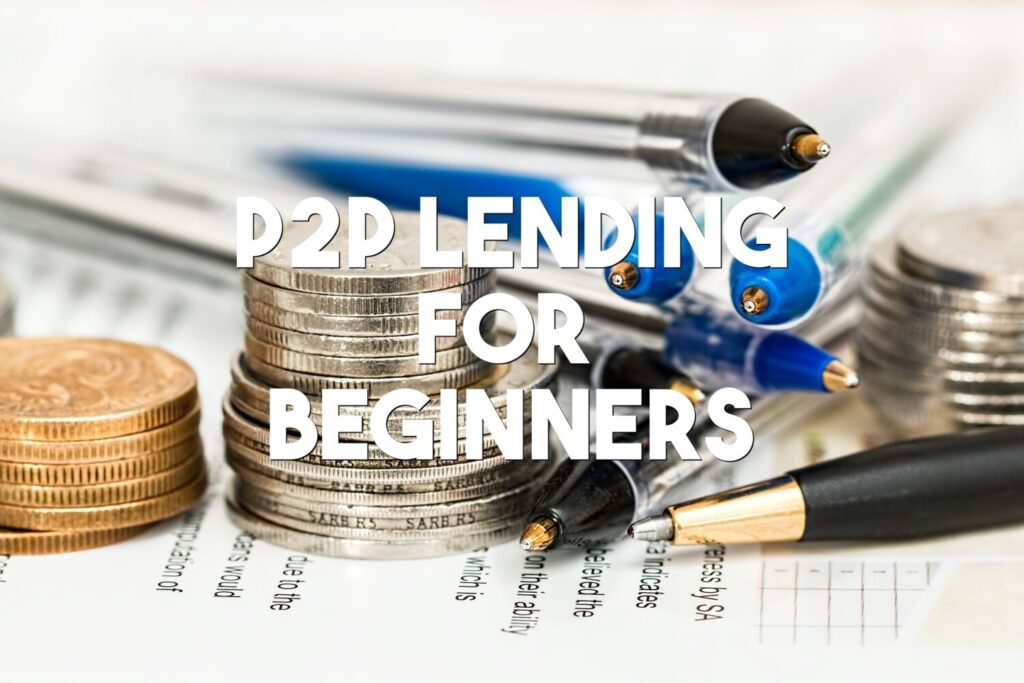We’ve reviewed dozens of P2P lending sites but we wanted to provide some basic information for newcomers to P2P investing. Read on to learn about P2P lending for beginners.
What is Peer-to-Peer Lending?
Although it seems like a challenging topic, P2P lending for beginners isn’t so tough to grasp. Peer-to-Peer lending, also called social lending, or crowdfunding, connects lenders and borrowers directly. It eliminates the middleman, such as banking institutions.
P2P lending is an old concept. Since the early days, individuals have been directly lending to each other. For example, you might borrow funds from your parents to fund a business or crowdfund from friends for a startup.
There is no collateral involved. Instead, relationships between and among individuals support the transactions.
Nowadays, P2P lending websites have made the process easier. They set the rates and terms that facilitate the transaction. However, the platforms are not the source of funds. They just act as a marketplace.
As such, loan approval takes lesser time, and borrowers get their funds faster. Let’s dive deeper and uncover P2P lending for beginners.
How does peer-to-peer lending work?
Peer-to-peer lending works differently for both lenders and borrowers. They undergo different steps, as detailed below.
Borrowers
Most borrowers opt for peer-to-peer lending because it’s cheaper, requires less stringent conditions, and they can get funds faster.
Initially, most borrowers used P2P funds to consolidate other loans, such as credit card debts, or for medical emergencies. However, nowadays, the use cases have expanded. Borrowers no use P2P platforms to fund businesses, mortgages, among others.
Each peer-to-peer lending platform has its process and procedures. However, they tend to work similarly. The process for borrowers follows these steps:
- The borrower opens an account and answers questions about the financial situation and the type of loan they need. The P2P platform then runs a credit check.
- The borrower is then assigned a loan grade based on their soft credit check. It lets lenders understand the borrower’s credit risk and credit-worthiness.
- The borrower provides documentation including proof and length of employment, total income, other debts, etc. The platform reviews documents for accuracy and authenticity
- Once approved, the platform lists the loan and lenders fund it. The money is then forwarded to the borrower’s account, usually within two business days.
- The borrower makes payments covering both principal and interest
Most P2P loans are handled online, and automatically, with personal loans ranging between $2000 and $35,000. Loan term typically ranges from between a month to five years.
Lenders / Investors
Lenders participate in P2P lending for different reasons, and also undergo a different process.
Peer-to-peer lending allows lenders and investors to diversify their investments and promises higher returns. It also offers an opportunity to fund a social cause or good.
Investors can view and analyze loans on most platforms. Based on the provided documentation, investors can choose who they want to fund. The process typically works out as follows:
- Borrowers open and fund their accounts on P2P lending platforms. They also undergo basic KYC compliance.
- They get access to the platform and can view loans and analyze documentation. Alternatively, investors can use the auto-invest tool on most platforms to automatically allocate funds.
- Investors can fund a variety of loans to spread risk, after which they can sit back and wait for interest and principal payments by the lender.
While most P2P lending platforms have a minimum investment amount, it’s typically low, sometimes starting at just 10 Euros.
Pros and Cons
As with all investments, social lending has its share of advantages and downsides. These include:
Pros
- Higher than average returns compared to some traditional asset classes
- Greater portfolio diversification and spreading of risk
- P2P currently covered by Financial Conduct Authority(FCA) regulation
- Ability to exit an investment earlier through the secondary market
- Each scheme offers its protection such as buyback guarantees
- Funding social good and social causes
- Tax-free possibility using Innovative Finance ISA’s
- Potential passive income revenue streams for investors
Cons
- P2P is still a young industry and as such, poorly regulated
- The FSCS doesn’t cover your investment
- Tax grey areas with no automatic deductions
- Some P2P providers charge an annual fee of around 1%
- You may not find a suitable investment immediately.
Which sectors does P2P lending fund?
From primarily funding personal unsecured loans in the past, P2P has expanded to fund other areas. They include:
- Personal Loans: Personal unsecured loans make the bulk of P2P lending. Borrowers can get up to $35,000 with loan terms ranging from a month to five years. Interest rates depend on your credit score and perceived risk. These loans can be used for debt consolidation, home improvement, car purchases, etc.
- Business Loans: These loans help businesses expand or cover working capital. Four of the biggest peer-to-peer lending sites, Prosper, Lending Club, Upstart, Funding Circle, among others, offer business loans.
- Real estate, Mortgages, and Refinances: Peer lending sites are increasingly funding the real estate sector. The loans go towards new developments, purchasing existing developments, among others. Refinancing covers a wide area such as mortgage refinancing, or even student loan refinancing.
- Healthcare Loans: Healthcare is expensive in most countries. Crowdfunding platforms are stepping up to address the gap. Borrowers can take a loan to cover medical expenses.
What are the major peer-to-peer lending platforms?
The P2P industry is growing exponentially, with platforms launching every other day. Here are some of the best and most popular peer-to-peer lending platforms in Europe:
- Mintos – One of the most popular P2P lending platforms in Europe. It has financed over 4 billion Euros worth of loans and enjoys a massive following with over 250,000 investors in 74 countries.
- Grupeer – Specializes in business loans, project development loans, invoice financing, among others. To date, it has facilitated over 10 million Euros in loans.
- ViaInvest – Boasts of over 12,000 investors in over 32 countries. It has funded over 130M Euros in loans with short-term loans and credit line loans being the bread and butter on the platform.
- Bondora – It’s one of the largest social lending platforms in Europe. It has operated for over eleven years and funded over 250,000 million in loans over that period.
- RoboCash – RoboCash is a young crowd-lending platform launched in February 2017. It specializes in short-term payday loans and has issued over 3M Euros worth of investments in 2019 alone.
What are the most significant risks facing peer-to-peer lending?
While a novel concept, p2p lending isn’t with its share of risks. Like any other investment, investors undertake a certain amount of risk. The most notable include:
- P2P lending platform going under with investor funds
- Borrowers defaulting on loans
- Lack of transparency on some platforms on the underlying collateral
- Poor regulation with numerous regulatory grey areas including on tax
- Geo-political and other global economic problems
- Ethical and other concerns
Given the above, investors should exercise caution, perform proper due diligence, and only invest money they can afford to lose. On the bright side, you don’t have to deal directly with the defaulter.
Outlook for the P2P lending industry
At least 26% of Americans and a higher percent for Europeans have sued a p2p lending service. Millennials are fueling the p2p push in Europe.
According to a Transparency Market Research document, the peer-to-peer lending was worth over $86 billion in 2018. It’s projected to grow to over $898 billion in 2024.
Conclusion
Peer-to-peer lending is a growing industry poised to take on the financial establishment. The current movement had its roots in the financial crisis of 2008 and the ensuing public anger. Done right, p2p lending promises to usher a new era of economic, and social responsibility, and hopefully, a more equitable, and inclusive financial space. We hope this P2P lending for beginners article has turned you into a P2P pro.





Hello
Hi!